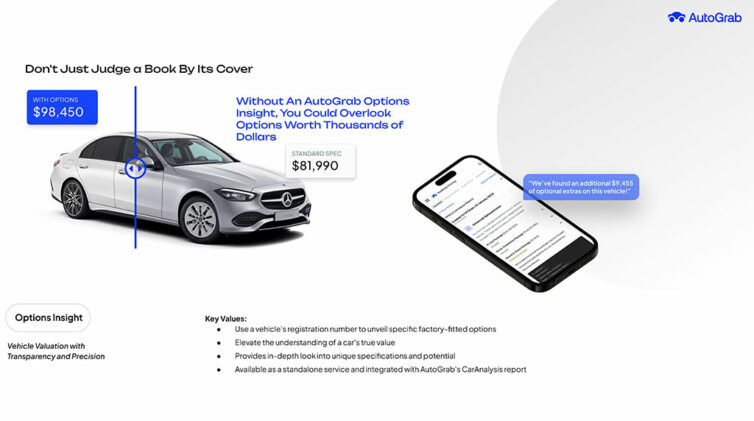Every line item in the current budget is carefully evaluated based on dollars spent, replacement cost, and ROI. Sales targets are negotiated with the distributor or OEM.
Contracts with suppliers are reviewed before they are renewed and dealership pay plans are often adjusted based on the potential of the next year’s sales performance and profit.
This level of financial accountability is essential, especially in the hyper-competitive retail auto industry that has historically thrived on such tight margins.
Just as important to each car dealer’s financial success is the underlying entrepreneurial expectation of growth. Each year, the management and sales team must grow sales and profit. Period.
This drive to improve and grow fuels the dealer’s success, the OEM’s success, and their community’s economic engine.
But what if dealers were to apply comparable evaluation principles to the sales potential in their customer portfolios? Could a similarly relentless focus on operational diligence, coupled with an expectation of continuous growth, increase the monthly sales and profit from the existing customer base?
As I travel every month, I meet a growing number of dealers who are tired of the 30-day hamster wheel of conquest sales. They know that of the thousands of brand-loyal past customers from their dealership who will be ready for a trade next year, their sales teams will only renew a fraction.
Every day, these same dealers also see dozens of customers who bought from competitors in their service drives, and they know those customers are driving vehicles the used car manager desperately needs to fill today’s market demand.
They also know that few, if any, of those customers will engage in a quality conversation with a member of their sales team.
The dealers I speak with know their portfolios hold the potential for a steady stream of sales appointments and deals every day. Their portfolios probably hold enough quality opportunities to hit 50 per cent or more of their monthly sales target. What they need to know is how to accurately evaluate the potential of their customer portfolios.
Just as with a financial review, the first step in evaluating portfolio potential is identifying its current state: examining both the health of the database and the number of historical sales from the dealership’s active customer base.
The second step is to set goals to grow the sales and profit from previous customers.
Ideally, these goals would be based on industry standards, but the best starting point usually comes from firsthand experience talking with customers on the showroom floor.
The third step is to put in place a sales plan that measures performance month over month and contains rewards for achieving incremental sales growth.
Here are three reference points to help dealers understand the current state of their portfolios:
- How many active sales and service customers does the dealership currently have?
- What is the dealership’s current sales-renewal rate (the percentage of monthly sales from previous sales customers)?
- What is the current service-conversion rate (the percentage of monthly sales to customers who bought elsewhere, but service with the dealer)?
I recommend that dealers put the following showroom activity plan in place to better understand their portfolios’ potential.
For three consecutive days, dealers should ask their sales teams to introduce them to every client with a sales appointment who previously bought from their dealership. They should take five minutes with each customer to thank them for their loyalty and to ask them about their experience with the dealership during their ownership cycle.
Doing so will not only provide valuable insights on customer experience, but it will also reveal the amount of daily selling opportunities currently being realised from their portfolio.
They should spend two mornings in the service drive, asking that the service manager introduce them to every customer whose vehicle wasn’t purchased from their dealership. Customers should be thanked for their business and asked why they have chosen this dealership for service.
Dealers should finish by asking if there’s anything their sales team could do to earn their business in the future.
Finally, dealers should meet with their leadership team to review the current state of the dealership’s portfolio, the portfolio appointments they met in the showroom, and the conversion opportunities they discovered in the service drive.
Together, the leadership should develop a plan to convert more service customers and to grow portfolio sales by making more appointments with past sales customers.
The portfolio sales plan might include such strategies as a weekly phone blitz to service customers who are driving vehicles the used car department needs while paying the sales team a “buy-in” fee equivalent to a sales commission.
It might include tracking the number of sales each sales team member made to past customers and paying a “repeat” customer bonus when a sales team member renews three or more customers in a month.
It might also include developing a daily process to offer a “no-obligation upgrade quote” to customers in the service drive who originally purchased elsewhere.
Once the plan is established, it’s important that dealers measure the performance of the three key reference points so they can track the growth of the dealership’s active sales and service customer base, the increase in sales renewals, and the increase in service conversion.
Dealers spend the last six weeks of the year evaluating their dealership’s financial performance and setting targets for the new year. They should take a week at the start of the new year to evaluate the potential of their customer portfolios and to put a plan in place with their leadership team to grow portfolio sales.
In that way they might just discover that the sales potential in their portfolio is massive, and a few hours of planning can not only save thousands in conquest advertising costs, but it can also produce a daily stream of appointments and sales.
Jeff Williams is president and CEO of Absolute Results Production
By Jeff Williams















 Read More: Related articles
Read More: Related articles

